Aversive olfactory learning and associative long-term memory in Caenorhabditis elegans
- PMID: 21960709
- PMCID: PMC3187929
- DOI: 10.1101/lm.2224411
Aversive olfactory learning and associative long-term memory in Caenorhabditis elegans
Abstract
The nematode Caenorhabditis elegans (C. elegans) adult hermaphrodite has 302 invariant neurons and is suited for cellular and molecular studies on complex behaviors including learning and memory. Here, we have developed protocols for classical conditioning of worms with 1-propanol, as a conditioned stimulus (CS), and hydrochloride (HCl) (pH 4.0), as an unconditioned stimulus (US). Before the conditioning, worms were attracted to 1-propanol and avoided HCl in chemotaxis assay. In contrast, after massed or spaced training, worms were either not attracted at all to or repelled from 1-propanol on the assay plate. The memory after the spaced training was retained for 24 h, while the memory after the massed training was no longer observable within 3 h. Worms pretreated with transcription and translation inhibitors failed to form the memory by the spaced training, whereas the memory after the massed training was not significantly affected by the inhibitors and was sensitive to cold-shock anesthesia. Therefore, the memories after the spaced and massed trainings can be classified as long-term memory (LTM) and short-term/middle-term memory (STM/MTM), respectively. Consistently, like other organisms including Aplysia, Drosophila, and mice, C. elegans mutants defective in nmr-1 encoding an NMDA receptor subunit failed to form both LTM and STM/MTM, while mutations in crh-1 encoding the CREB transcription factor affected only the LTM.
Figures
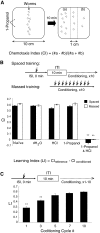
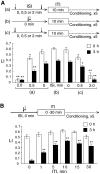
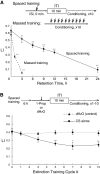
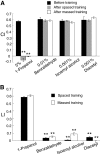
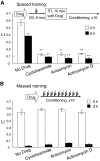
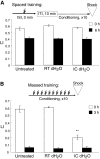
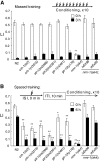
References
-
- Ardiel EL, Rankin CH 2010. An elegant mind: Learning and memory in Caenorhabditis elegans. Learn Mem 17: 191–201 - PubMed
-
- Bailey CH, Giustetto M, Huang YY, Hawkins RD, Kandel ER 2000. Is heterosynaptic modulation essential for stabilizing Hebbian plasticity and memory? Nat Rev Neurosci 1: 11–20 - PubMed
-
- Bargmann CI, Horvitz HR 1991. Chemosensory neurons with overlapping functions direct chemotaxis to multiple chemicals in C. elegans. Neuron 7: 729–742 - PubMed
-
- Bargmann CI, Mori I 1997. Chemotaxis and thermotaxis. In C. elegans II (ed. Riddle DL et al.), pp. 717–737 Cold Spring Harbor Laboratory Press, Cold Spring Harbor, NY - PubMed
MeSH terms
Substances
LinkOut - more resources
Full Text Sources
Research Materials
